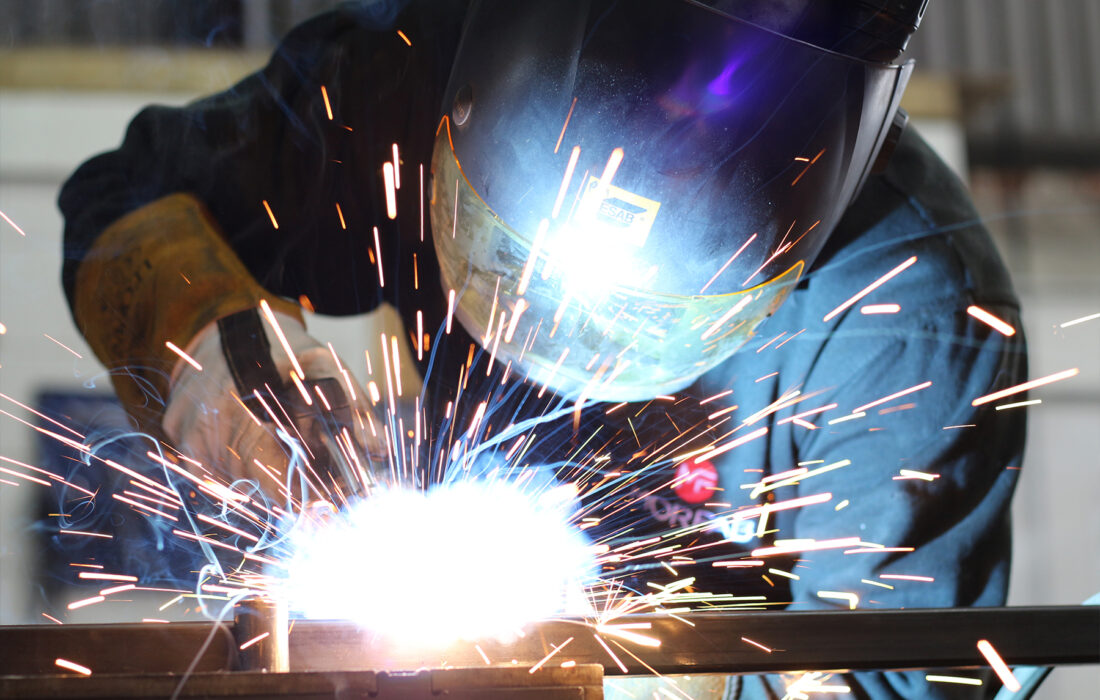Comprehensive Evaluation of Cutting-Edge Techniques in Steel Manufacture Industry
As the steel fabrication industry continues to progress, the assimilation of cutting-edge techniques has actually become necessary for remaining affordable and fulfilling the needs of modern-day production standards. In this dynamic industry where modern technology plays a pivotal role, understanding the nuances of these advanced techniques is not just an option however a requirement for those looking to create ahead in the ever-evolving world of steel fabrication.
Laser Cutting Developments
In the realm of steel fabrication, laser cutting developments have reinvented the accuracy and effectiveness of metal shaping processes. By harnessing the power of focused laser beams, producers can now attain unparalleled degrees of precision when puncturing various sorts of metals. This modern technology makes it possible for complex styles to be performed with minimal material waste, making it an affordable service for industries calling for high accuracy elements.
Among the crucial benefits of laser cutting is its capability to handle a wide variety of materials, consisting of stainless steel, light weight aluminum, and carbon steel, easily. The process generates tidy, burr-free edges, removing the demand for additional ending up steps. Furthermore, the non-contact nature of laser cutting reduces the risk of product contamination, causing greater high quality end items.
Furthermore, laser reducing devices can be set to make swift, exact cuts, significantly lowering manufacturing time compared to standard cutting approaches. This speed and accuracy make laser cutting specifically suitable for mass manufacturing atmospheres where performance is critical. As innovation proceeds to advance, laser cutting is positioned to play an increasingly crucial duty in the steel manufacture industry.

CNC Machining Innovations
The development of CNC machining technologies has actually introduced a brand-new era of accuracy and efficiency in the steel construction market. Computer System Numerical Control (CNC) equipments have actually revolutionized steel fabrication by providing unparalleled accuracy and repeatability in the manufacturing process. metal fabrication melbourne. One of the crucial technologies in CNC machining is the assimilation of advanced software systems that allow real-time surveillance and adjustments, leading to enhanced productivity and quality assurance
Furthermore, the development of multi-axis CNC machines has actually permitted the construction of complicated steel parts with intricate designs that were previously challenging to produce. These machines can perform a variety of machining procedures, including milling, boring, transforming, and grinding, all with high degrees of precision.
Moreover, the unification of automation and robotics in CNC machining has structured manufacturing processes, decreased lead times, and minimized the margin of mistake. This assimilation of innovative innovations not only boosts performance however also ensures regular high quality across all made steel parts. In conclusion, CNC machining technologies remain to drive developments in the steel manufacture market, setting brand-new standards for accuracy and efficiency.
Automated Welding Technologies
Automated welding modern technologies have actually revolutionized the steel manufacture industry, boosting effectiveness and precision in the welding procedure. These advanced modern technologies use computer-controlled systems to automate the welding procedure, leading to greater efficiency degrees and improved weld top quality. One of the vital benefits of automated welding is the capability to perform complex welds with constant precision, lowering the possibility of errors and remodel.
Robot welding systems are at the leading edge of automated welding modern technologies, offering unmatched speed and precision. These systems can manage a wide variety of welding jobs, from easy to complex, with ease (metal fabrication melbourne). By utilizing sophisticated sensing units and software, robotic welders can adapt to variants in product and joint geometry, making certain an uniform and reputable weld
In addition, automated welding modern technologies improve work environment safety and security by decreasing my website the direct exposure of human welders to hazardous fumes and intense heat. As the steel fabrication industry continues to develop, integrating automated welding modern technologies site here will certainly be essential for companies looking to stay competitive and meet the growing demands for top notch bonded items.
Robotics Assimilation in Manufacture
Using robot systems in construction processes has become a pivotal technique for improving efficiency and precision in modern production settings. Robotics assimilation in steel fabrication offers a myriad of advantages, consisting of raised performance, boosted quality assurance, and improved precaution. These sophisticated robot systems are furnished with sophisticated sensors and programming capacities, permitting them to do complex tasks with a high degree of accuracy and repeatability.
Among the essential advantages of robotics integration in steel fabrication is the ability to automate recurring tasks, such as material handling, reducing, welding, and assembly procedures. This not only speeds up manufacturing cycles however also lowers the threat of human error, leading to greater overall item quality. In addition, robotics can operate 24/7, considerably boosting manufacturing output and conference tight task due dates.

3D Printing in Steel Manufacturing
Having transformed the steel manufacture market through robotics assimilation, the burgeoning expedition of 3D printing in steel production is positioned to more advance the world of modern-day manufacturing methods. 3D printing, additionally referred to as additive manufacturing, supplies unprecedented layout flexibility and complexity, allowing the development of detailed steel structures that were formerly unattainable with typical production techniques. By making use of computer-aided layout (CAD) software program, suppliers can precisely regulate the layer-by-layer deposition of steel product, resulting in get rid of boosted geometries and functionalities.
Among the key benefits of 3D printing in steel production is its ability to minimize product waste significantly. Unlike subtractive production processes where excess material is trimmed away, 3D printing just utilizes the needed quantity of steel needed for the last part. This effectiveness not only brings about cost savings yet additionally straightens with lasting production techniques by decreasing ecological influence.
Additionally, 3D printing makes it possible for quick prototyping and personalization, allowing for the production of tiny batches of complex steel parts with brief preparations. As the innovation remains to grow and become much more accessible, its integration right into mainstream steel fabrication processes is expected to drive advancement and efficiency across the market.
Final Thought
Finally, the steel fabrication market has actually seen considerable developments in strategies such as laser cutting, CNC machining, automated welding, robotics combination, and 3D printing. These cutting-edge innovations have reinvented the way steel items are made, resulting in boosted cost-effectiveness, accuracy, and effectiveness. Continued investment in these innovative techniques is critical for the sector to remain affordable and fulfill the needs of contemporary manufacturing processes.
As the steel fabrication industry continues to advance, the assimilation of sophisticated strategies has actually come to be essential for remaining competitive and meeting the needs of contemporary manufacturing standards.One of the essential advantages of laser cutting is its ability to deal with a large variety of products, consisting of stainless steel, aluminum, and carbon steel, with simplicity.Automated welding modern technologies have actually revolutionized the steel fabrication sector, boosting effectiveness and precision in the welding process.Having actually changed the steel manufacture sector with robotics assimilation, the growing expedition of 3D printing in steel manufacturing is positioned to additional advance the world of contemporary manufacturing techniques.In conclusion, the steel fabrication industry has seen significant innovations in methods such as laser cutting, CNC machining, automated welding, robotics integration, and 3D printing.
Comments on “Cutting-Edge Metal Fabrication Melbourne: Customized Solutions for Every Project”